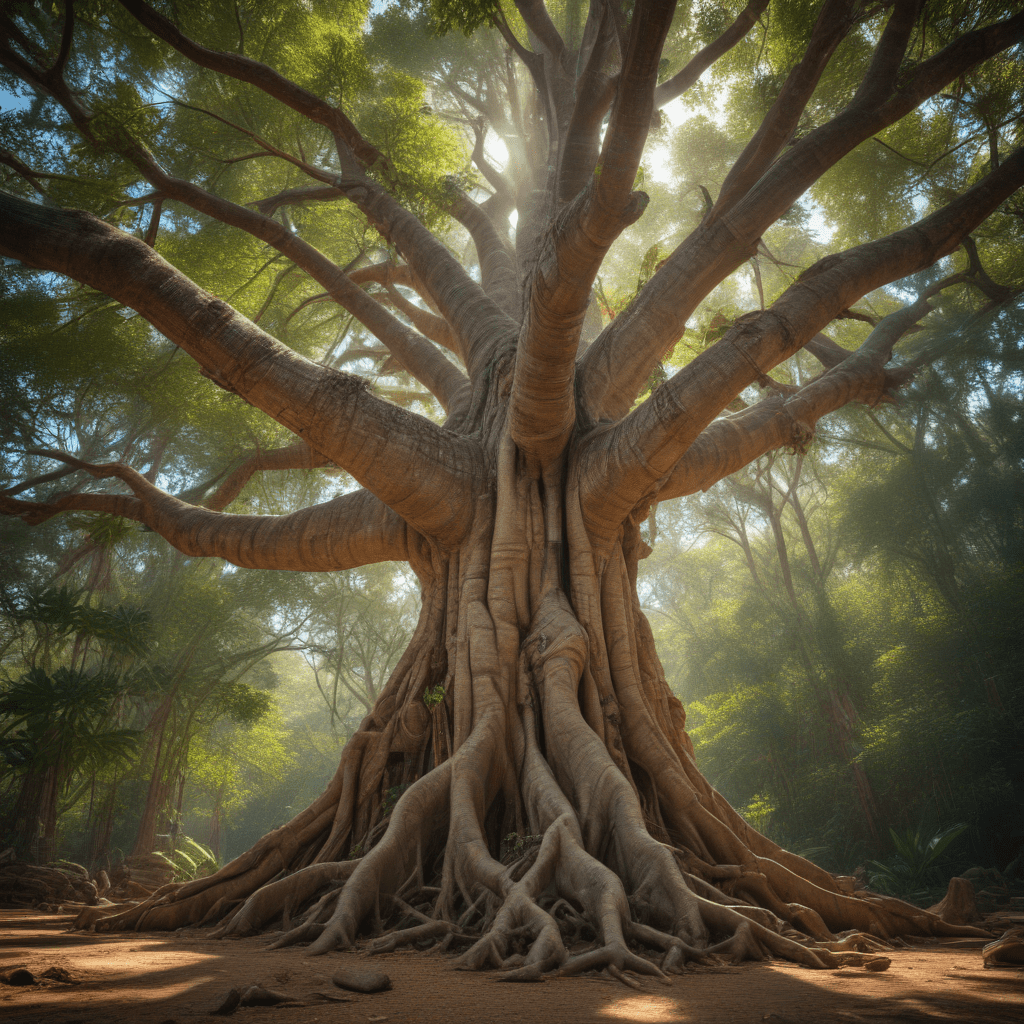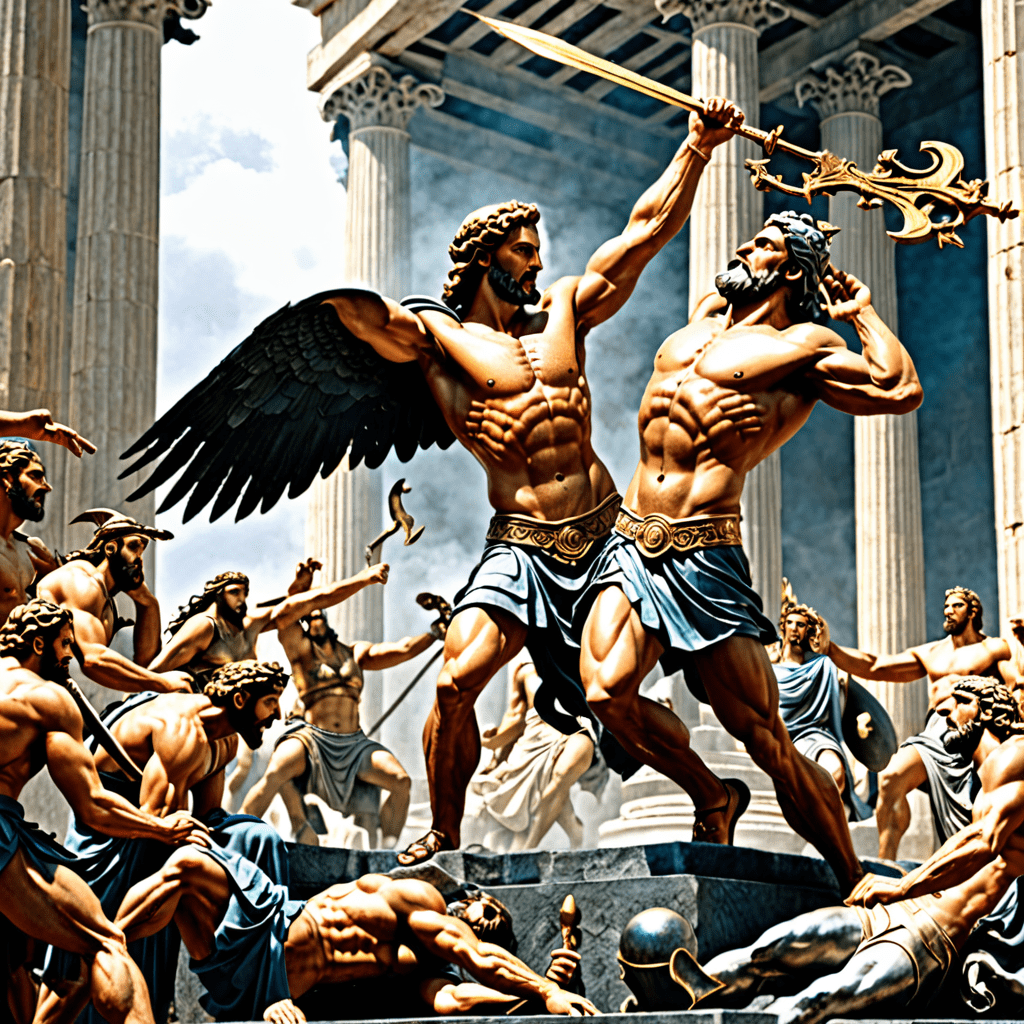The Myth of the Sacred Ceiba Tree in Mayan Culture
The Ceiba tree, also known as the "Yaxche" in the Mayan language, holds a significant place in Mayan mythology and culture. Revered as the "Tree of Life," the Ceiba symbolizes the connection between the underworld, the earthly realm, and the heavens. Its towering presence and vast root system represent the interconnectedness of all living things and the cyclical nature of life, death, and rebirth.
The Ceiba Tree in Mayan Mythology
The Ceiba tree permeates various Mayan myths and legends, each highlighting its sacred qualities.
a. The Tree of Life
The Ceiba is often depicted as the "Tree of Life," its branches reaching towards the heavens and its roots extending deep into the underworld. This symbolism represents the tree's role as a conduit between the realms, allowing communication between the gods, humans, and the spirits of the dead.
b. The World Tree
In some Mayan myths, the Ceiba is considered the "World Tree," supporting the four cardinal directions and holding the sky in place. Its trunk represents the central axis of the universe, connecting the different levels of existence.
c. The Axis Mundi
The Ceiba's role as the "Axis Mundi," the center of the world, is emphasized in its association with the four cardinal directions. The tree's branches are said to extend to the east, west, north, and south, symbolizing its connection to all corners of the cosmos.
d. The Tree of Creation
The Ceiba is also associated with the creation myth in some Mayan cultures. It is believed that the first humans emerged from the trunk of the Ceiba tree, signifying its role as the source of life and the origin of humanity.
e. The Home of the Gods
The Ceiba is often depicted as the dwelling place of the gods, particularly the rain god Chaac. Its vast canopy is said to provide shelter and sustenance to the deities, further emphasizing its sacred status.
The Ceiba Tree in Mayan Ritual and Ceremony
The sacred nature of the Ceiba tree was reflected in various Mayan rituals and ceremonies.
a. Sacrificial Offerings
Mayan priests often performed sacrifices at the base of the Ceiba tree, offering blood, food, and other precious objects to appease the gods and ensure their favor. These offerings were believed to maintain the balance between the realms and guarantee the continued fertility of the land.
b. Ritual Dances
Ritual dances were performed around the Ceiba tree to invoke the gods and celebrate important events, such as the solstices and equinoxes. The dancers, adorned with feathers and painted with symbolic designs, would move in a circular motion, mimicking the cyclical nature of life and the universe.
c. Bloodletting
Ritual bloodletting was a common practice among the Maya, and the Ceiba tree played a significant role in these ceremonies. The priests would pierce their tongues or earlobes and offer their blood to the tree, believing that this act would nourish the gods and strengthen their connection to the human world.
d. Incense Burning
Incense was burned at the base of the Ceiba tree during rituals and ceremonies to purify the air and create a sacred atmosphere. The fragrant smoke was believed to carry prayers to the heavens and ward off evil spirits.
The Ceiba Tree in Mayan Art and Architecture
The Ceiba tree motif appears extensively in Mayan art and architecture, further solidifying its cultural significance.
a. Stelae and Altars
Mayan stelae, tall carved stone monuments, often depict the Ceiba tree as a central motif. The tree is usually portrayed with its roots extending into the underworld and its branches reaching towards the heavens, symbolizing the interconnectedness of the realms. Altars, used for offerings and sacrifices, also frequently feature the Ceiba tree design.
b. Murals and Paintings
Mayan murals and paintings often incorporate the Ceiba tree as a backdrop or a central element. The tree is depicted in various settings, such as scenes of creation, rituals, and battles. Its presence reinforces the sacredness of these events and emphasizes its role in Mayan cosmology.
c. Temples and Pyramids
Mayan temples and pyramids were often constructed around or in alignment with existing Ceiba trees. The towering presence of the tree enhanced the sacredness of these structures, connecting them to the heavens and the underworld. The tree's symbolism also served to reinforce the authority of the rulers and priests who resided in these sacred spaces.
The Ceiba Tree in Modern Mayan Culture
The Ceiba tree continues to hold cultural and environmental significance for modern Maya communities.
a. Symbol of Identity
The Ceiba tree remains a powerful symbol of identity for modern Maya people. Its enduring presence connects them to their ancestors and their rich cultural heritage. The tree serves as a reminder of their historical lineage and the importance of preserving their traditions.
b. Environmental Conservation
The Ceiba tree plays a crucial role in maintaining the ecological balance of the Mayan region. Its deep root system helps stabilize the soil, while its dense foliage provides habitat for numerous animal species. Modern Maya communities often engage in conservation efforts to protect these sacred trees and the biodiversity they sustain.
c. Cultural Preservation
The Ceiba tree serves as a focal point for cultural revitalization and preservation among contemporary Maya communities. Traditional rituals and ceremonies continue to be performed beneath these sacred trees, strengthening community ties and transmitting ancient knowledge to younger generations. The tree's enduring cultural significance ensures that the Mayan worldview and spiritual beliefs remain vibrant and alive.
Conclusion
The Ceiba tree is a multifaceted symbol deeply embedded in Mayan mythology, culture, and environmental consciousness. Its association with creation, life, death, and rebirth reflects the Mayan's profound understanding of the interconnectedness of the universe. The Ceiba tree continues to inspire awe and reverence, serving as a tangible reminder of the rich and enduring legacy of the Mayan civilization.
FAQ
What are the scientific names for the Ceiba tree?
The Ceiba tree has two primary scientific names: Ceiba pentandra and Ceiba speciosa.
Is the Ceiba tree found in other cultures besides the Maya?
Yes, the Ceiba tree is found in various cultures throughout Mesoamerica and South America, including the Aztecs, the Zapotecs, and the Incas. Each culture has its own set of myths and beliefs associated with the tree.
Is the Ceiba tree still used in rituals and ceremonies today?
The Ceiba tree remains an important part of traditional rituals and ceremonies among modern Mayan communities. Indigenous groups in other parts of Latin America also continue to revere the tree for its cultural and spiritual significance.
Can I visit a Ceiba tree in person?
It is possible to visit a Ceiba tree in various locations, including archaeological sites, botanical gardens, and national parks in Central America and Mexico. It is crucial to show respect for the tree's cultural and spiritual significance when visiting these sacred sites.



